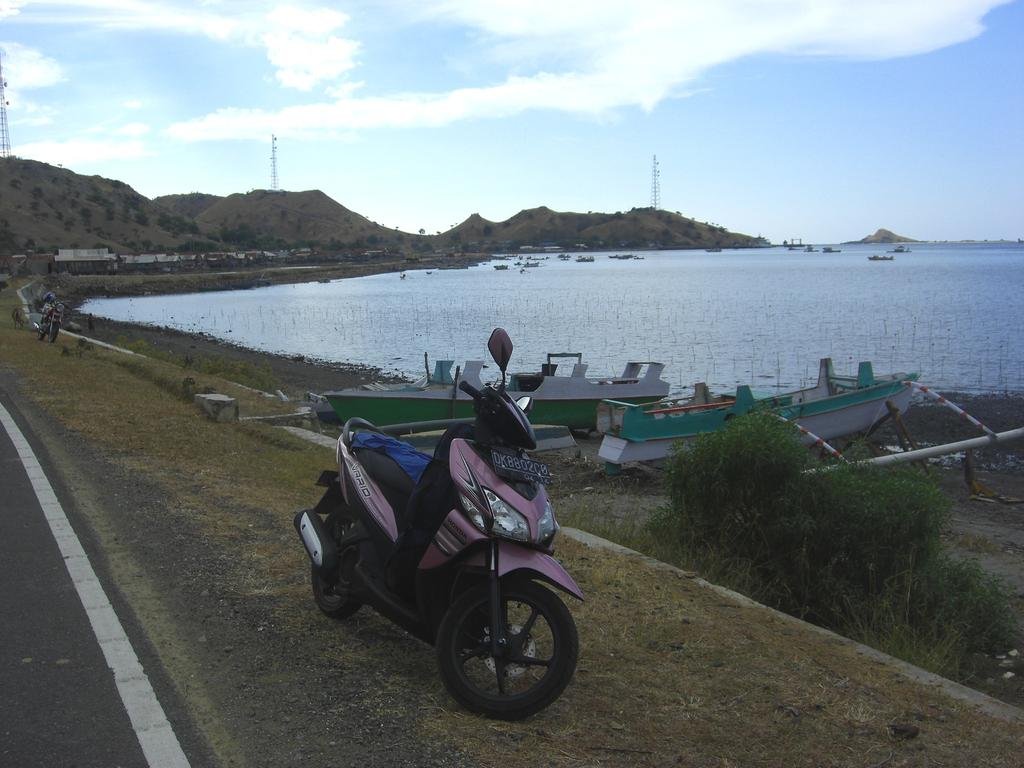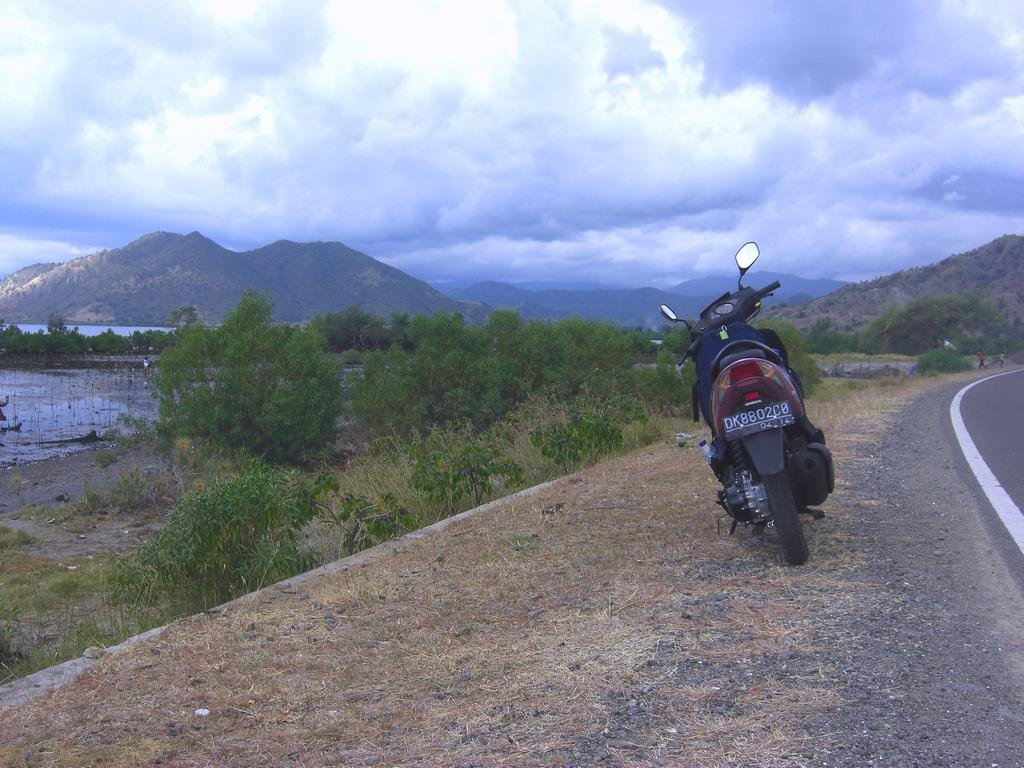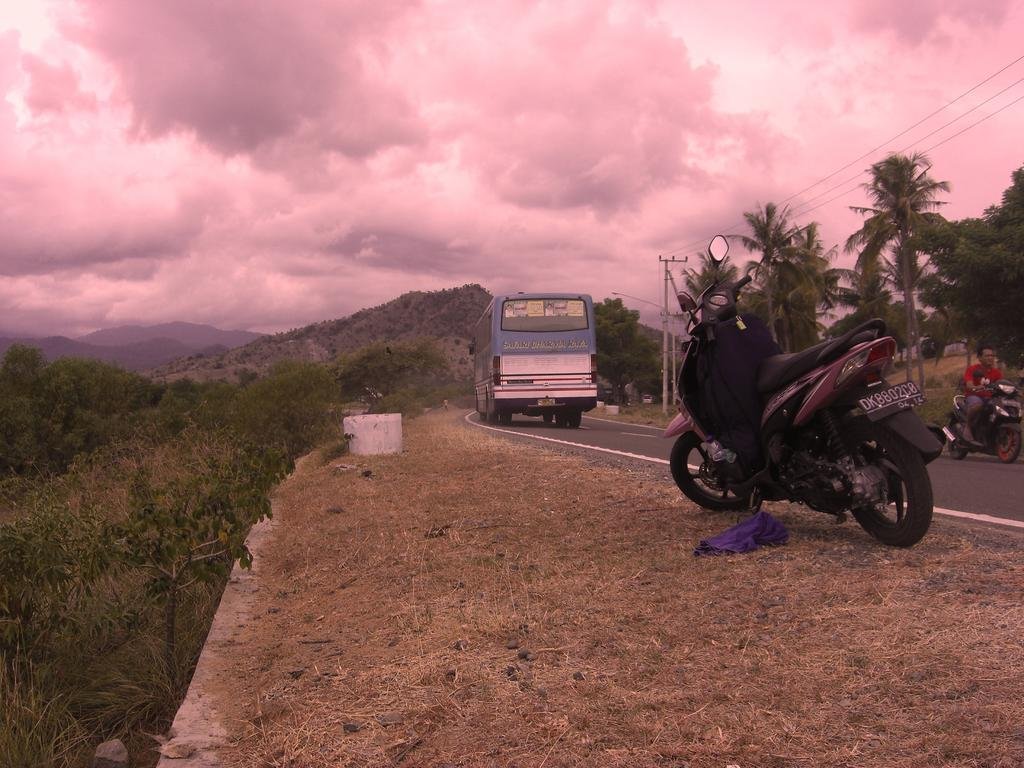merantau
Senior Member
LOMBOK BOUND
The last vehicle, a wooden-sided Mitsubishi 3 tonner had just shoehorned its way into the only remaining space on the ferry’s vehicle deck. At a signal from the dock, the skipper gave the order to raise the loading ramp and the electric winches whirred into action. The crew, port authority staff and most Indonesian passengers, paid scant attention, but the young backpackers aboard crowded the rails to see the action below. The sound of winches was whisked away on a gentle breeze and replaced by two sharp blasts on the ferry’s siren. Waves broke on the rocky headland to port, sending plumes of spray skywards. The churning screws spat out a turgid, foaming, current of white water. We were on our way.
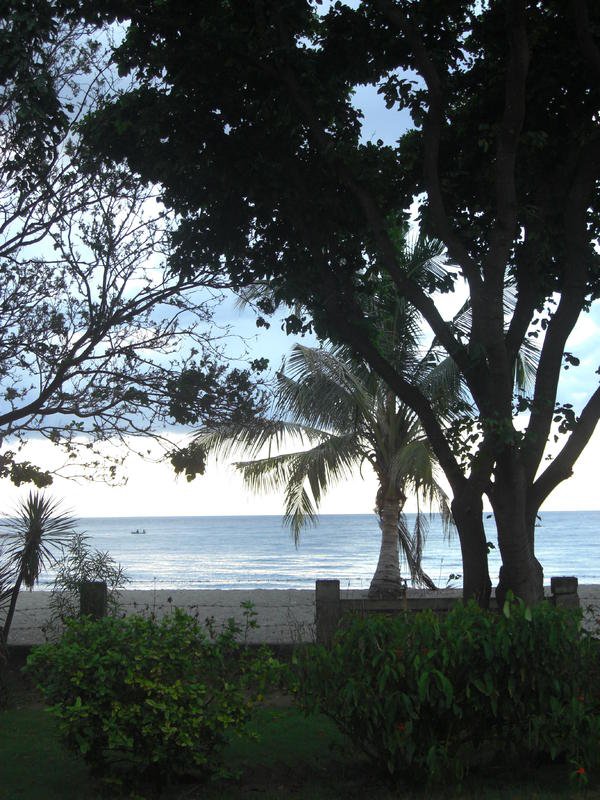
Passengers relaxed in the lounge watching violence-laden Chinese kung-fu movies, or risqué video clips featuring vampish Javanese singers belting out dangdut (Indian influenced pop music), hips gyrating with calculated and impressive vigour. Indonesia is renowned for its spices and these were indeed spicy performers.
Up on deck, passengers sought out the shade, slept, chatted, smoked and snacked, idling away the time between islands. Tiny Nusa Lembongan and its comparatively giant neighbour, Nusa Penida, slid by to starboard, and were soon behind us, as we steamed eastwards. At one point a pod of dolphins broke the surface and accompanied us for a few hundred metres before finding something better to do. Occasionally we would disturb some flying fish, and off they would go, skittering across the surface like stones skimmed across a pool. The sun beat down, plans were hatched, mobile numbers swapped, stories told, questions asked – all to the accompaniment of the engines’ hum. It wasn’t long before Lombok’s coast appeared. A haphazard line of low, green hills tumbled down to meet the sea. Jungle covered headlands separated tiny little bays where waves exhausted themselves against the beckoning shore.
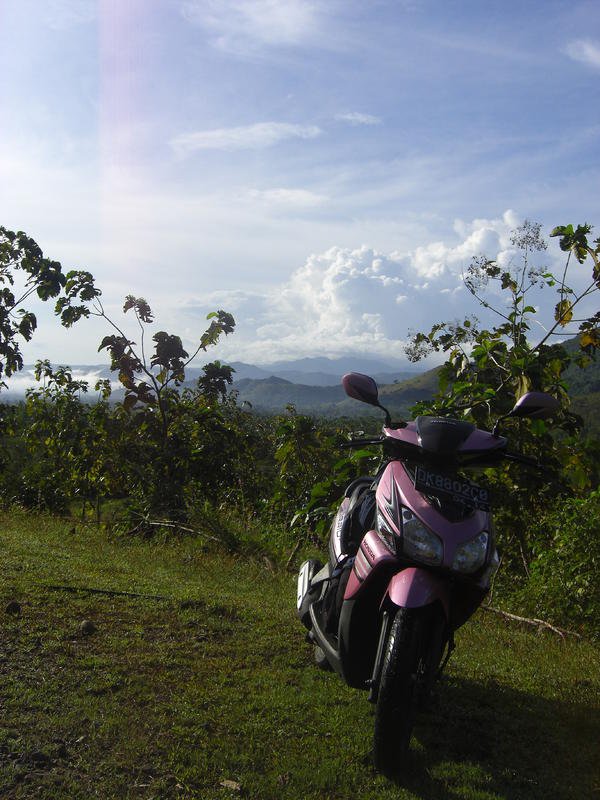
Four hours into the trip and, little by little, the tiny port of Lembar began to take shape. Against a backdrop of large fuel tanks, warehouses and dock-mounted cranes, a dredge, three of four ferries and a host of tiny fishing boats with gaily-coloured triangular sails, rose and fell gently on the placid sea. Passengers stirred. I grabbed my gear and made my way below.
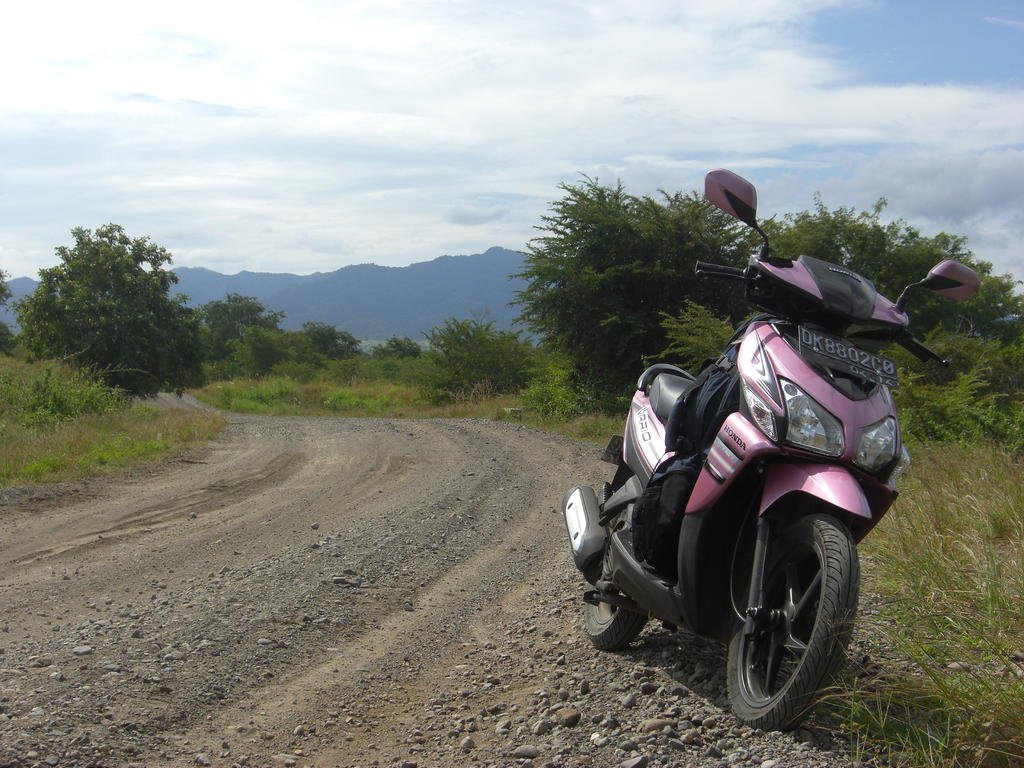
It was a tight squeeze getting to the bike. Vehicles, jammed one against the other, were somehow going to have to be disentangled. Plenty of riders were already mounted or busy strapping on bags. Trucks and buses fired up engines. The hold began to fill with fumes. We bike riders cursed. ‘Come on boys. Get the ramp down. We want out of here!’
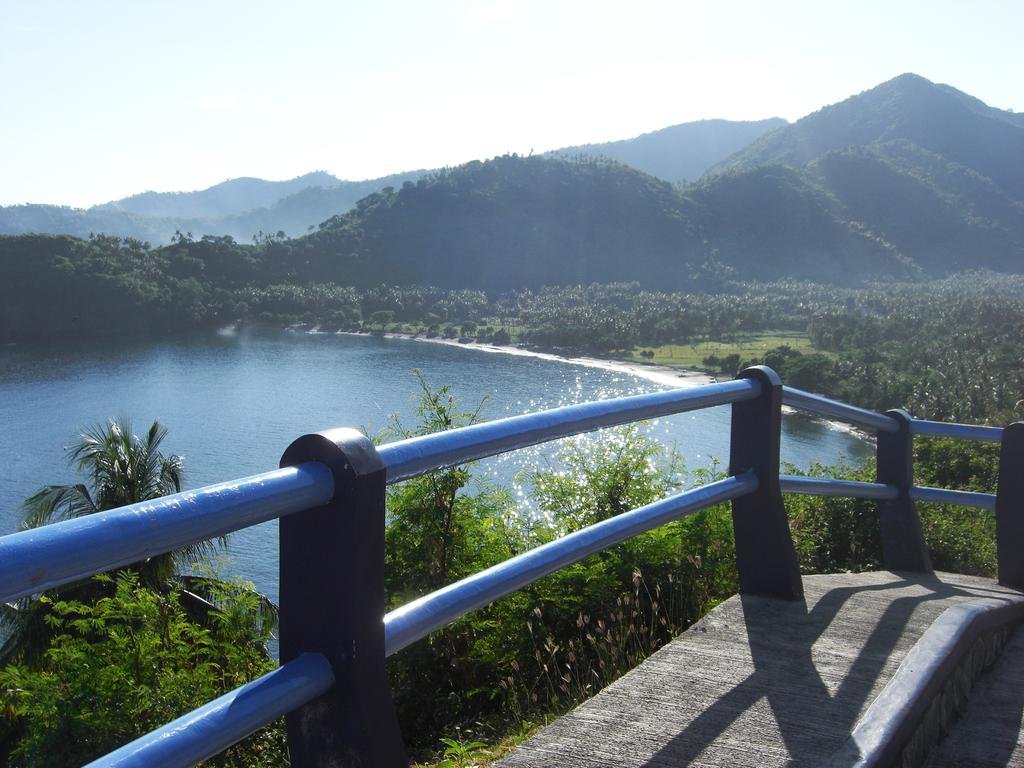
The skipper inched us closer to the dock and the ramp began its slow descent revealing the waiting passengers and vehicles Lombok-side. A line was thrown and soon a massive rope was looped over a bollard. A slight jolt and clunk told us the ramp had locked into the dock – we were anchored. I eased my bike off the centre stand and started the engine. A white uniformed crew member began to wave us forward.
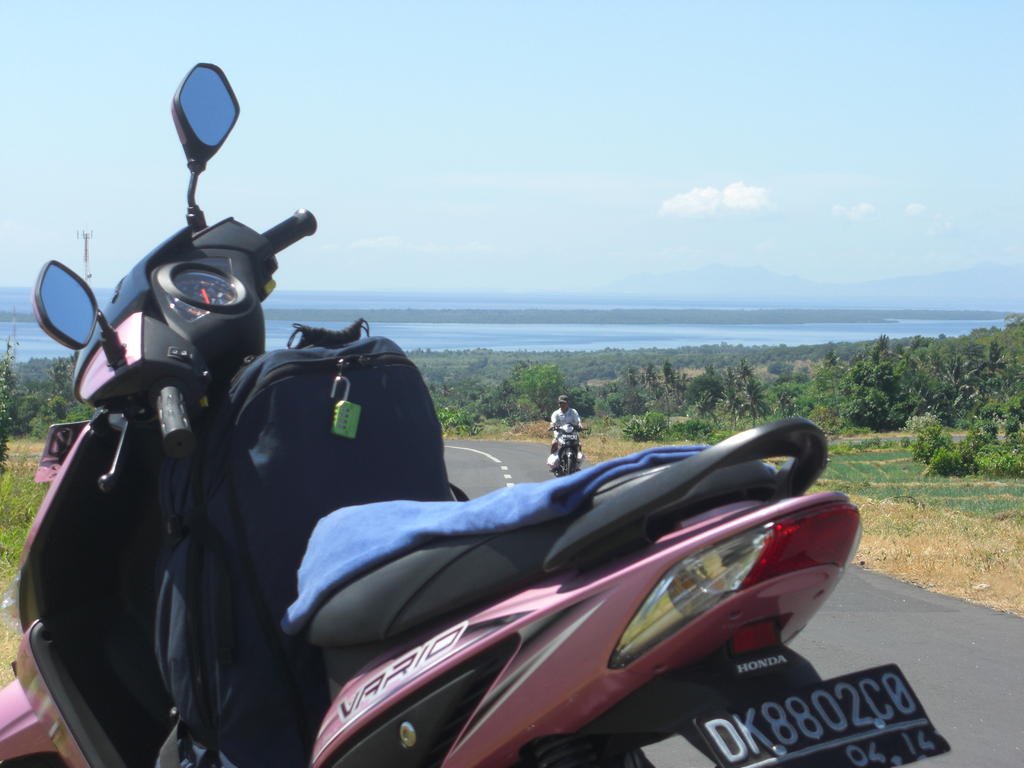
What an incredible sense of freedom you feel when accelerating away from the knot of taxi and mini-bus drivers who have gathered to greet the incoming passengers. Eager to separate them from as much of their hard earned as they can muster, do I see a slight licking of lips as the first back-packers begin to emerge from the vessel? A flick of my right wrist takes me beyond this unfolding scene and I am racing across the wide expanse of the car park, dodging pot holes, seeking the freedom of the exit gate and the road ahead.
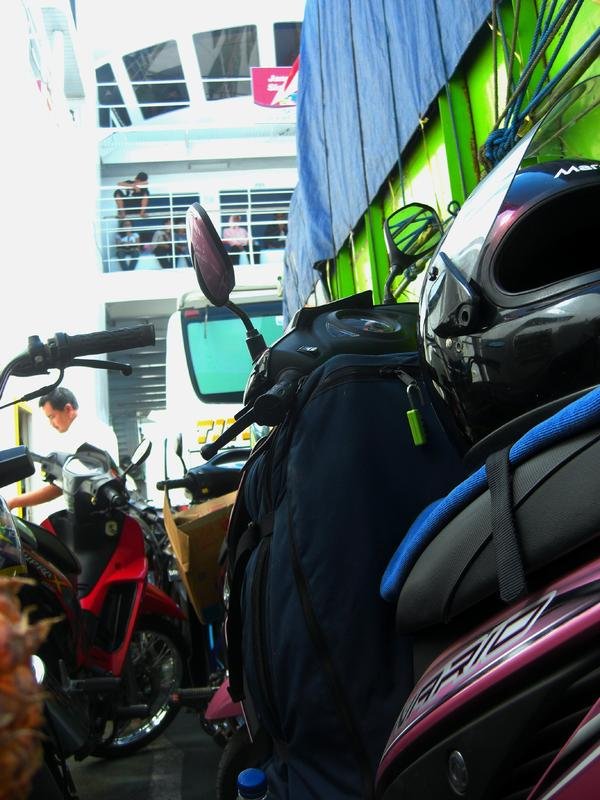
Lombok. So close to Bali yet, by comparison so little visited, it doesn’t even warrant the appellation of ‘poor cousin’. But all that is about to change; Bali’s tourism bonanza cannot continue forever. Like every pounding wave that makes its way to the sun blessed sands of Kuta beach, it will run its course. The sun-and-fun seeking hordes will move on and Lombok’s recently completed international airport is waiting to process them. Lombok offers friendly people and magnificent beaches, untouched by big bucks commercial development. I was there to enjoy them while I could.
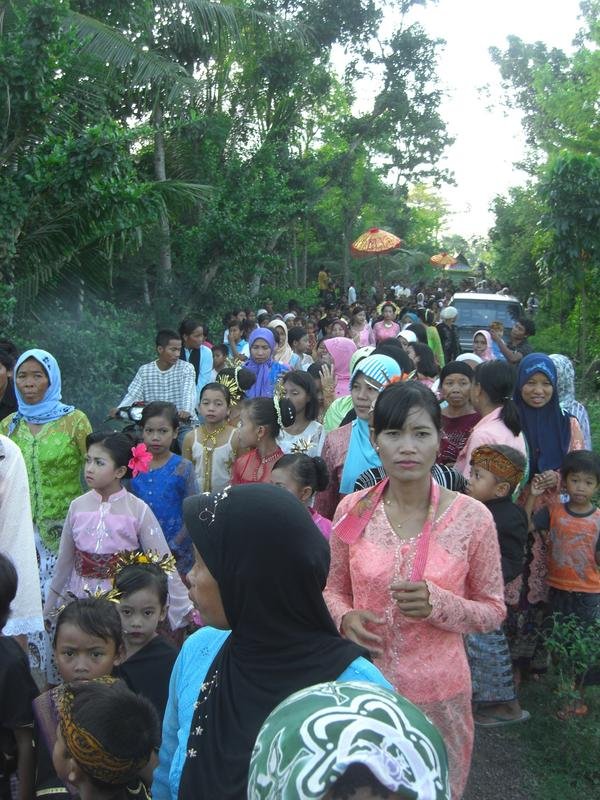
I drove under the arch that announced, “Welcome to Lombok”, keeping an eye out for a petrol vendor. It wasn’t long before I spotted one - a little wooden stand sporting two racks of one litre bottles of ‘bensin’ and a sign – Rupiah 5000. At just five hundred above the pump price (5000 Rupiah is approx. 58 cents Australian a litre), only a scrooge would begrudge these enterprising householders their little profit margin. I pulled up. Out came an almond-eyed beauty from behind the roadside kiosk from whence she sold the knick-knack essentials of daily life. A smile from me elicited a dazzler from her. Out came the plastic funnel and a swirl of her delicate wrist set up a vortex which expelled the bottle’s contents in a flash. It was so deftly and gracefully done I called for another litre. Handing over the loot I said in my best Indonesian: ‘You’ve got style.’ Another dazzling smile sealed this brief encounter and sent me on my way. All was well with the world!
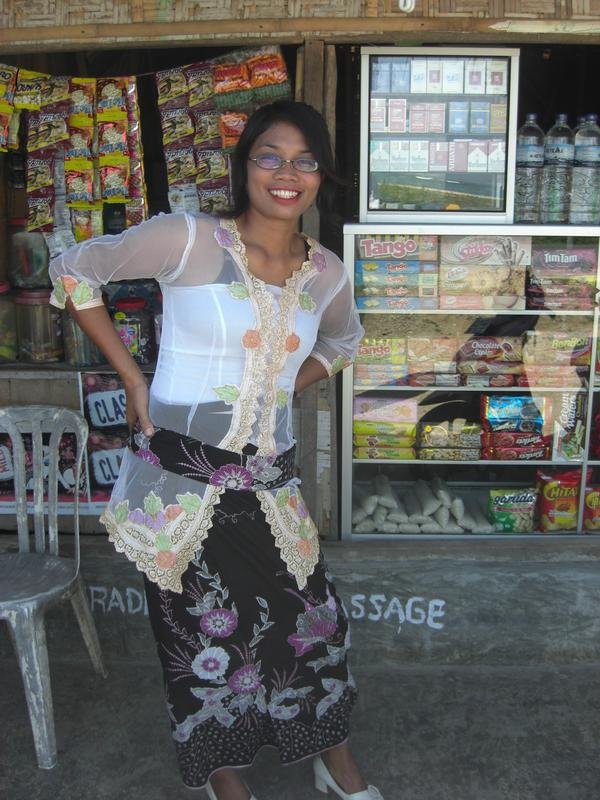
Traffic was light compared to Bali. But the same hazards were there – potholes, errant pedestrians, skylarking schoolkids – plus, an additional one. Lombok, being far less ‘developed’ than Bali, features dokars – little horse drawn carts – as a popular and cheap form of people and goods mover. And where you’ve got horses, you’ve got droppings - lots of them! The thought crossed my mind: ‘I wonder what the co-efficient of friction is between tyre rubber and a freshly deposited dollop?’ I didn’t want to find out the answer the hard way. Instead, I found myself keeping my eyes peeled, ever alert to flick the little Honda out of harm’s way – especially in the vicinity of markets where dokars were thick on the ground. The plan was to head for the old port city of Ampenam and snare a bite to eat at a roadside eatery or cafe in the market. After that I’d head north, 12 kilometres distant to the coastal strip of Senggigi Beach where I’d be sure to find accommodation for the night.
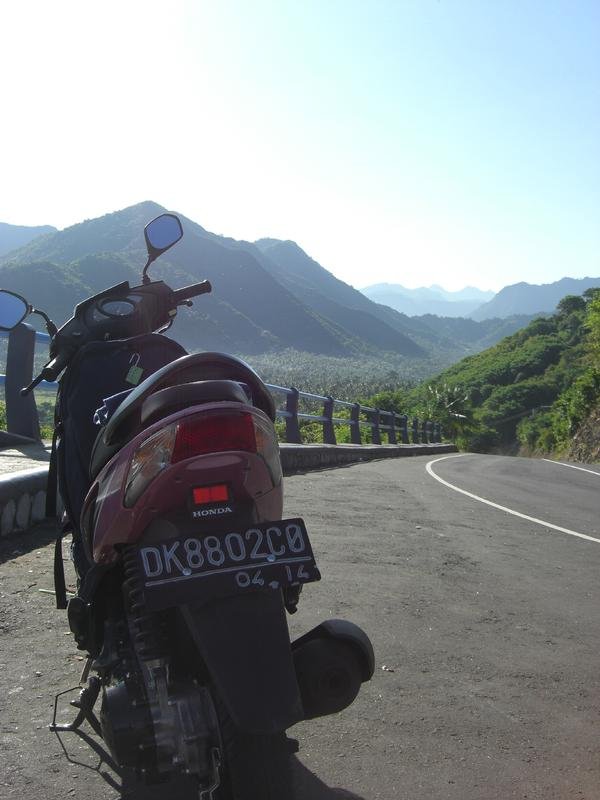
It wasn’t long before I reached Kediri, a town noted for its mosques and Islamic schools or madrassahs. A busy scene confronted me. The narrow main street was clogged with traffic. Police and parking officials did their best to unpick the tangle created by a dokar driver who’d lost part of his load of cane baskets and bags of rice. There was little to do but wait patiently and edge forward with the flow as, one-by-one, vehicles were ushered past the bottle neck. It was hot enough to fray tempers but no one unravelled or abused the hapless culprit as he laboured with his load.
Beyond Kediri the country opened up. I had entered the broad coastal plain that leads to Lombok’s major urban conglomerate – the conjoined cities of Ampenan, Mataram and Cakranegara. The road was wide, smooth and straight. It forged its way between padi fields whose serried rows of seedlings were so uniform you could be forgiven for thinking they’d been planted with the aid of a template. Lines of tall, ramrod straight coconut palms marched across the fields, denoting boundaries, and in the distance a jagged range of hills separated the tilled fields from the sea.
I passed a major intersection which allowed traffic coming from the west to join the Ampenam-bound stream. Traffic density flowing west increased markedly so overtaking became a lot more problematic. Patience rather than panache ruled the day. ‘Live fast, die young and leave a good looking corpse.’ was not a maxim I was inclined to take up - life is much too enjoyable to be snuffed out prematurely beneath the wheels of an on-coming truck. However, many young Indonesian riders had a touch of the James Dean’s about them, as they flashed by me at high speed, just managing to get back in and live to do it again a click or two down the road.
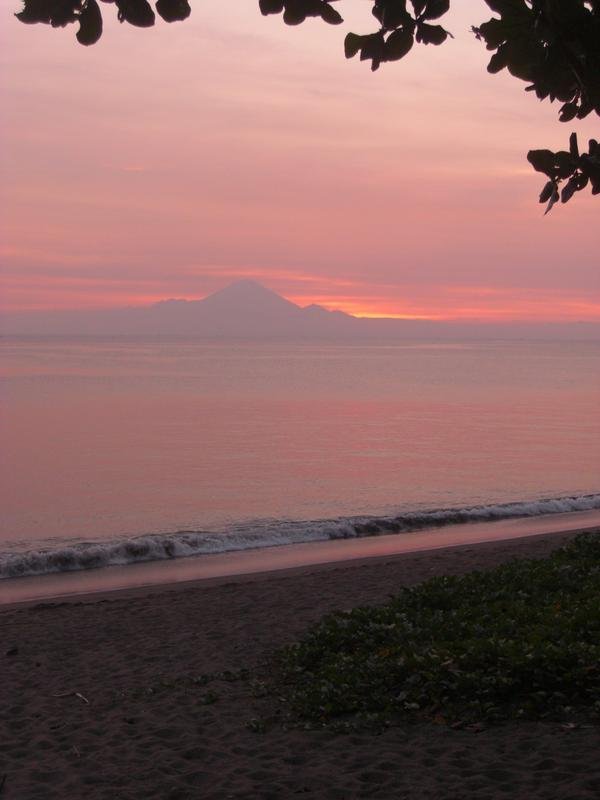
In the late afternoon I reached the narrow by-ways of Ampenam’s Arab quarter. I spotted a likely looking market. A phalanx of bikes was parked out front and the young guy who held the parking franchise waved me to a vacant slot. I dismounted and followed my nose to the smell of chicken satay being grilled over hot coals in front of a little stand. A stool, a bench, a hot black Lombok coffee in hand, polite inquiries as to where I was from and where I was headed, warm smiles and a plate of delicious food in front of me – what more could a lone traveller wish for?
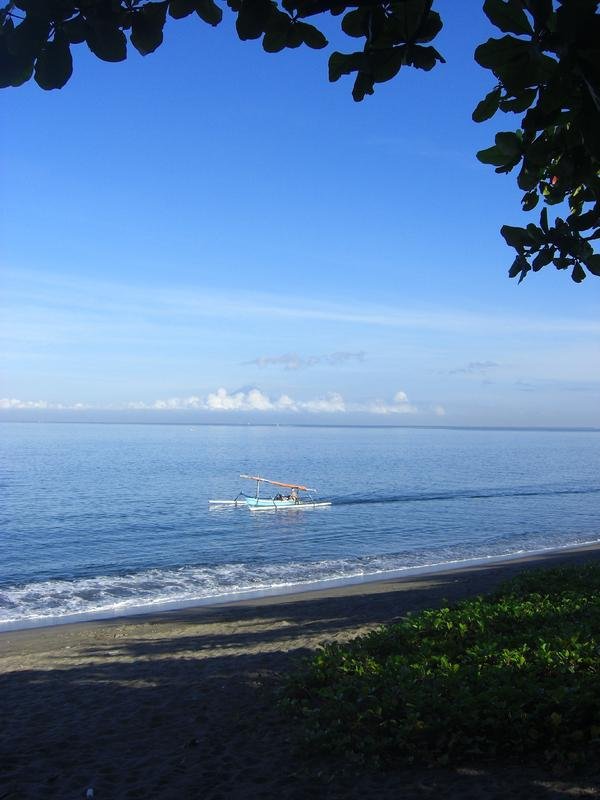
Refreshed and re-invigorated I paid up, made my way to the bike park and paid my Rp.1000 (about 12 cents) parking fee. The young attendant retrieved my machine and then, with much whistle blowing, and arm waving, held up the traffic so I could blend smoothly into the flow heading north to Senggigi. Shortly after I was in amongst a tangle of vehicles weaving their way between the potholes and kicking up the dust - all eager to be free of the city and out in open country again.
The road north lay slightly inland from the sea. Nevertheless you could sense its proximity. Farmers drove their buffaloes home after a day’s ploughing; young boys kept flocks of noisy ducks in line and on the move, with the use of long bamboo canes. The roadside was alive with the commerce of village life – a barber shop here, a bike repair shop there, stalls selling coconuts, fruits and vegetables And everywhere, people on the way home at the end of the working day.
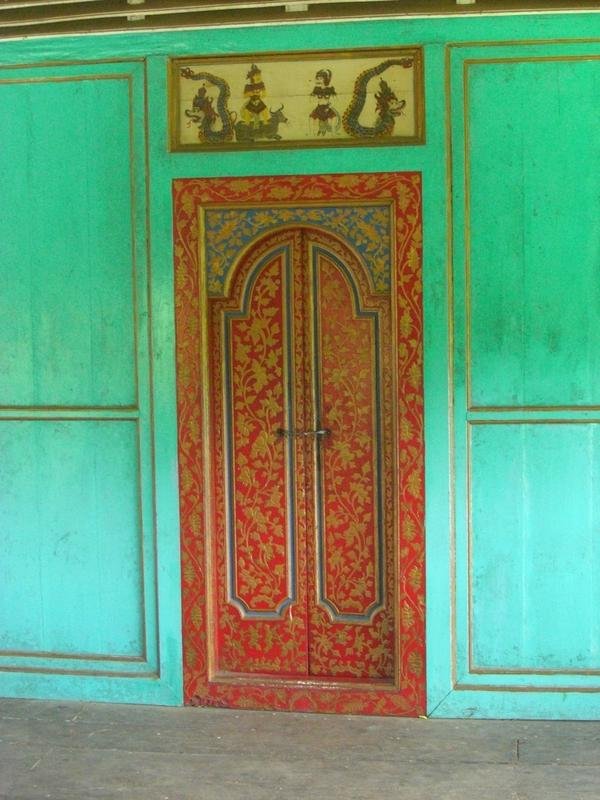
The first sign I was nearing Senggigi was as depressing as it was unexpected. A garish banner, strung across the road advertised ‘Club 69 Karoke.’ Silhouetted female forms cavorted against a yellow backdrop – a tawdry meeting of West and East each dragging the other down in a triumph of tastelessness. I drove on by, alert and watchful, looking for a hotel. Not long after, out of the corner of my eye, I spotted a small signboard: ‘Pondok Siti Hawa, Backpackers.’ I pulled up quickly, did a U-turn and drove in through the gates. A cobbled path wound its way through a lush garden. I pulled up at the side of the house and made my way around the back. There, relaxing on a raised platform, was Pak Husin, a New Zealander married to Siti Hawa. ‘Welcome brother,’ he said getting up to shake hands. ‘Siti Hawa,’ he called. ‘Ada tamu.’ (A guest has arrived). Seconds later a beaming Siti Hawa appeared from the kitchen. I liked her straight away. ‘Mari, mari,’ she gestured and we made our way through her lush garden to a small, stone, brick and bamboo bungalow. Self-contained with a thatched roof, it was perfect for my needs. I threw my gear on the bed and Siti rushed off to put the coffee on.
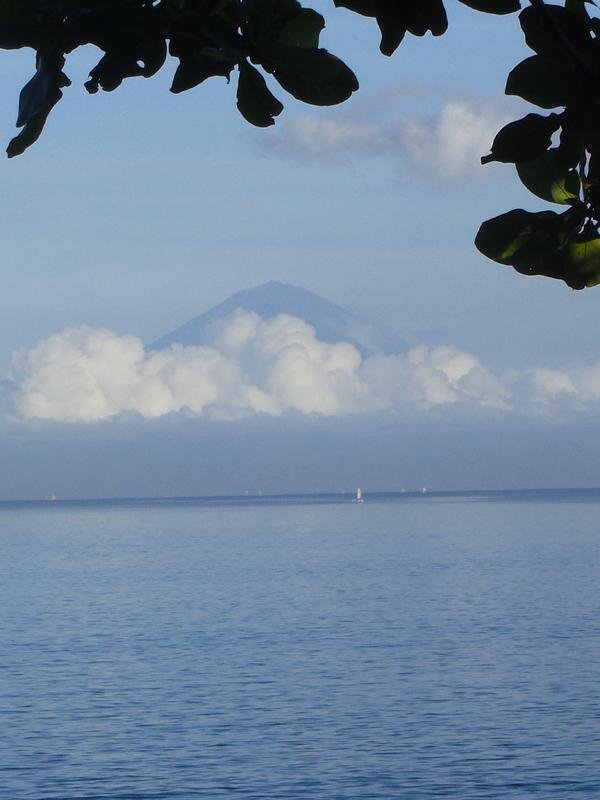
The sea was 30 metres away at the edge of the garden. I strolled along the narrow path which ended at a gap in the greenery. The golden sands curved away to left and right extending as far as the eye could see. The waves expired with a gentle hiss. There in front of
me, just across the strait, lay Bali, its holy mountain, ‘Gunung Agung’ the ‘Great One’, rising majestically out of the sea. The sand, sea and sky were suffused with the red/yellow glow of the setting sun. I thought to myself: ‘How lucky am I? I’ve just left the ‘Island of the Gods’, and now I’ve stumbled upon a little corner of Paradise.’
The last vehicle, a wooden-sided Mitsubishi 3 tonner had just shoehorned its way into the only remaining space on the ferry’s vehicle deck. At a signal from the dock, the skipper gave the order to raise the loading ramp and the electric winches whirred into action. The crew, port authority staff and most Indonesian passengers, paid scant attention, but the young backpackers aboard crowded the rails to see the action below. The sound of winches was whisked away on a gentle breeze and replaced by two sharp blasts on the ferry’s siren. Waves broke on the rocky headland to port, sending plumes of spray skywards. The churning screws spat out a turgid, foaming, current of white water. We were on our way.

Passengers relaxed in the lounge watching violence-laden Chinese kung-fu movies, or risqué video clips featuring vampish Javanese singers belting out dangdut (Indian influenced pop music), hips gyrating with calculated and impressive vigour. Indonesia is renowned for its spices and these were indeed spicy performers.
Up on deck, passengers sought out the shade, slept, chatted, smoked and snacked, idling away the time between islands. Tiny Nusa Lembongan and its comparatively giant neighbour, Nusa Penida, slid by to starboard, and were soon behind us, as we steamed eastwards. At one point a pod of dolphins broke the surface and accompanied us for a few hundred metres before finding something better to do. Occasionally we would disturb some flying fish, and off they would go, skittering across the surface like stones skimmed across a pool. The sun beat down, plans were hatched, mobile numbers swapped, stories told, questions asked – all to the accompaniment of the engines’ hum. It wasn’t long before Lombok’s coast appeared. A haphazard line of low, green hills tumbled down to meet the sea. Jungle covered headlands separated tiny little bays where waves exhausted themselves against the beckoning shore.

Four hours into the trip and, little by little, the tiny port of Lembar began to take shape. Against a backdrop of large fuel tanks, warehouses and dock-mounted cranes, a dredge, three of four ferries and a host of tiny fishing boats with gaily-coloured triangular sails, rose and fell gently on the placid sea. Passengers stirred. I grabbed my gear and made my way below.

It was a tight squeeze getting to the bike. Vehicles, jammed one against the other, were somehow going to have to be disentangled. Plenty of riders were already mounted or busy strapping on bags. Trucks and buses fired up engines. The hold began to fill with fumes. We bike riders cursed. ‘Come on boys. Get the ramp down. We want out of here!’

The skipper inched us closer to the dock and the ramp began its slow descent revealing the waiting passengers and vehicles Lombok-side. A line was thrown and soon a massive rope was looped over a bollard. A slight jolt and clunk told us the ramp had locked into the dock – we were anchored. I eased my bike off the centre stand and started the engine. A white uniformed crew member began to wave us forward.

What an incredible sense of freedom you feel when accelerating away from the knot of taxi and mini-bus drivers who have gathered to greet the incoming passengers. Eager to separate them from as much of their hard earned as they can muster, do I see a slight licking of lips as the first back-packers begin to emerge from the vessel? A flick of my right wrist takes me beyond this unfolding scene and I am racing across the wide expanse of the car park, dodging pot holes, seeking the freedom of the exit gate and the road ahead.

Lombok. So close to Bali yet, by comparison so little visited, it doesn’t even warrant the appellation of ‘poor cousin’. But all that is about to change; Bali’s tourism bonanza cannot continue forever. Like every pounding wave that makes its way to the sun blessed sands of Kuta beach, it will run its course. The sun-and-fun seeking hordes will move on and Lombok’s recently completed international airport is waiting to process them. Lombok offers friendly people and magnificent beaches, untouched by big bucks commercial development. I was there to enjoy them while I could.

I drove under the arch that announced, “Welcome to Lombok”, keeping an eye out for a petrol vendor. It wasn’t long before I spotted one - a little wooden stand sporting two racks of one litre bottles of ‘bensin’ and a sign – Rupiah 5000. At just five hundred above the pump price (5000 Rupiah is approx. 58 cents Australian a litre), only a scrooge would begrudge these enterprising householders their little profit margin. I pulled up. Out came an almond-eyed beauty from behind the roadside kiosk from whence she sold the knick-knack essentials of daily life. A smile from me elicited a dazzler from her. Out came the plastic funnel and a swirl of her delicate wrist set up a vortex which expelled the bottle’s contents in a flash. It was so deftly and gracefully done I called for another litre. Handing over the loot I said in my best Indonesian: ‘You’ve got style.’ Another dazzling smile sealed this brief encounter and sent me on my way. All was well with the world!

Traffic was light compared to Bali. But the same hazards were there – potholes, errant pedestrians, skylarking schoolkids – plus, an additional one. Lombok, being far less ‘developed’ than Bali, features dokars – little horse drawn carts – as a popular and cheap form of people and goods mover. And where you’ve got horses, you’ve got droppings - lots of them! The thought crossed my mind: ‘I wonder what the co-efficient of friction is between tyre rubber and a freshly deposited dollop?’ I didn’t want to find out the answer the hard way. Instead, I found myself keeping my eyes peeled, ever alert to flick the little Honda out of harm’s way – especially in the vicinity of markets where dokars were thick on the ground. The plan was to head for the old port city of Ampenam and snare a bite to eat at a roadside eatery or cafe in the market. After that I’d head north, 12 kilometres distant to the coastal strip of Senggigi Beach where I’d be sure to find accommodation for the night.

It wasn’t long before I reached Kediri, a town noted for its mosques and Islamic schools or madrassahs. A busy scene confronted me. The narrow main street was clogged with traffic. Police and parking officials did their best to unpick the tangle created by a dokar driver who’d lost part of his load of cane baskets and bags of rice. There was little to do but wait patiently and edge forward with the flow as, one-by-one, vehicles were ushered past the bottle neck. It was hot enough to fray tempers but no one unravelled or abused the hapless culprit as he laboured with his load.
Beyond Kediri the country opened up. I had entered the broad coastal plain that leads to Lombok’s major urban conglomerate – the conjoined cities of Ampenan, Mataram and Cakranegara. The road was wide, smooth and straight. It forged its way between padi fields whose serried rows of seedlings were so uniform you could be forgiven for thinking they’d been planted with the aid of a template. Lines of tall, ramrod straight coconut palms marched across the fields, denoting boundaries, and in the distance a jagged range of hills separated the tilled fields from the sea.
I passed a major intersection which allowed traffic coming from the west to join the Ampenam-bound stream. Traffic density flowing west increased markedly so overtaking became a lot more problematic. Patience rather than panache ruled the day. ‘Live fast, die young and leave a good looking corpse.’ was not a maxim I was inclined to take up - life is much too enjoyable to be snuffed out prematurely beneath the wheels of an on-coming truck. However, many young Indonesian riders had a touch of the James Dean’s about them, as they flashed by me at high speed, just managing to get back in and live to do it again a click or two down the road.

In the late afternoon I reached the narrow by-ways of Ampenam’s Arab quarter. I spotted a likely looking market. A phalanx of bikes was parked out front and the young guy who held the parking franchise waved me to a vacant slot. I dismounted and followed my nose to the smell of chicken satay being grilled over hot coals in front of a little stand. A stool, a bench, a hot black Lombok coffee in hand, polite inquiries as to where I was from and where I was headed, warm smiles and a plate of delicious food in front of me – what more could a lone traveller wish for?

Refreshed and re-invigorated I paid up, made my way to the bike park and paid my Rp.1000 (about 12 cents) parking fee. The young attendant retrieved my machine and then, with much whistle blowing, and arm waving, held up the traffic so I could blend smoothly into the flow heading north to Senggigi. Shortly after I was in amongst a tangle of vehicles weaving their way between the potholes and kicking up the dust - all eager to be free of the city and out in open country again.
The road north lay slightly inland from the sea. Nevertheless you could sense its proximity. Farmers drove their buffaloes home after a day’s ploughing; young boys kept flocks of noisy ducks in line and on the move, with the use of long bamboo canes. The roadside was alive with the commerce of village life – a barber shop here, a bike repair shop there, stalls selling coconuts, fruits and vegetables And everywhere, people on the way home at the end of the working day.

The first sign I was nearing Senggigi was as depressing as it was unexpected. A garish banner, strung across the road advertised ‘Club 69 Karoke.’ Silhouetted female forms cavorted against a yellow backdrop – a tawdry meeting of West and East each dragging the other down in a triumph of tastelessness. I drove on by, alert and watchful, looking for a hotel. Not long after, out of the corner of my eye, I spotted a small signboard: ‘Pondok Siti Hawa, Backpackers.’ I pulled up quickly, did a U-turn and drove in through the gates. A cobbled path wound its way through a lush garden. I pulled up at the side of the house and made my way around the back. There, relaxing on a raised platform, was Pak Husin, a New Zealander married to Siti Hawa. ‘Welcome brother,’ he said getting up to shake hands. ‘Siti Hawa,’ he called. ‘Ada tamu.’ (A guest has arrived). Seconds later a beaming Siti Hawa appeared from the kitchen. I liked her straight away. ‘Mari, mari,’ she gestured and we made our way through her lush garden to a small, stone, brick and bamboo bungalow. Self-contained with a thatched roof, it was perfect for my needs. I threw my gear on the bed and Siti rushed off to put the coffee on.

The sea was 30 metres away at the edge of the garden. I strolled along the narrow path which ended at a gap in the greenery. The golden sands curved away to left and right extending as far as the eye could see. The waves expired with a gentle hiss. There in front of
me, just across the strait, lay Bali, its holy mountain, ‘Gunung Agung’ the ‘Great One’, rising majestically out of the sea. The sand, sea and sky were suffused with the red/yellow glow of the setting sun. I thought to myself: ‘How lucky am I? I’ve just left the ‘Island of the Gods’, and now I’ve stumbled upon a little corner of Paradise.’


